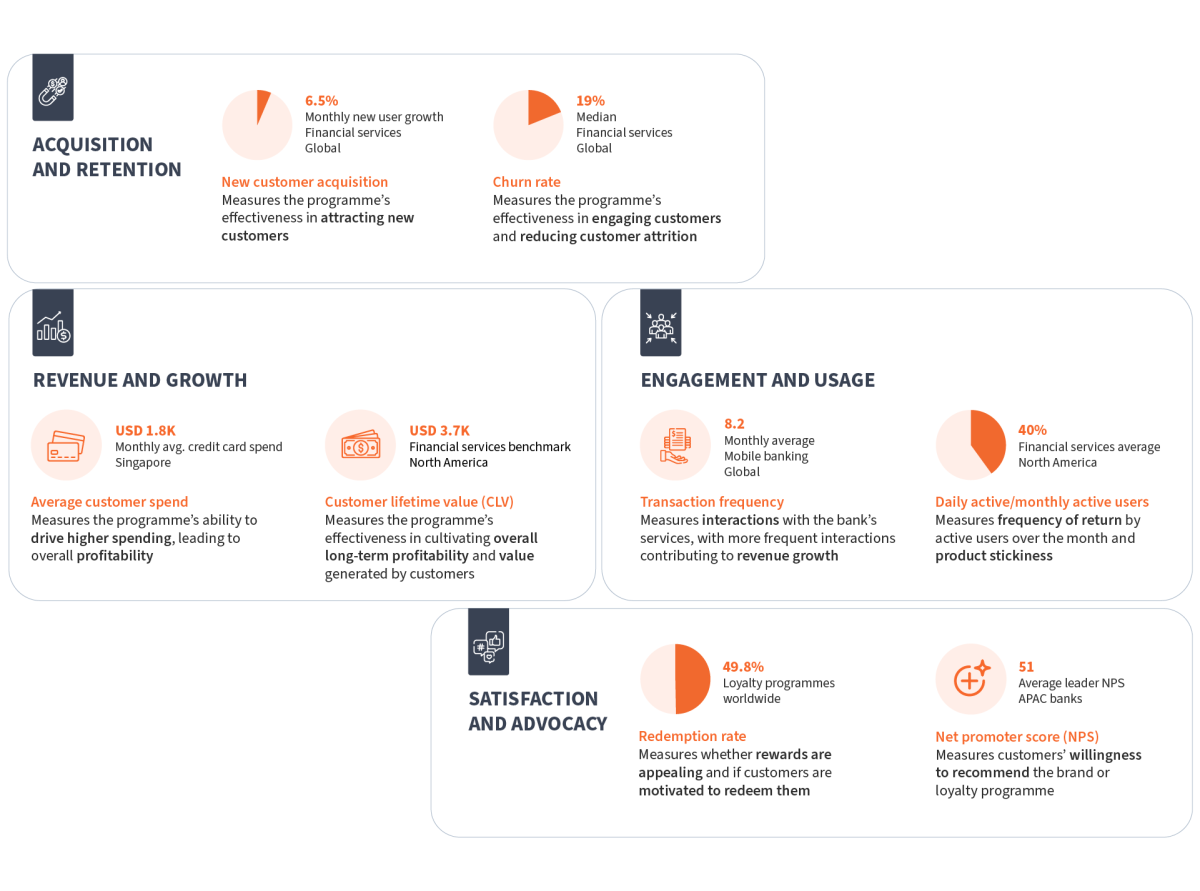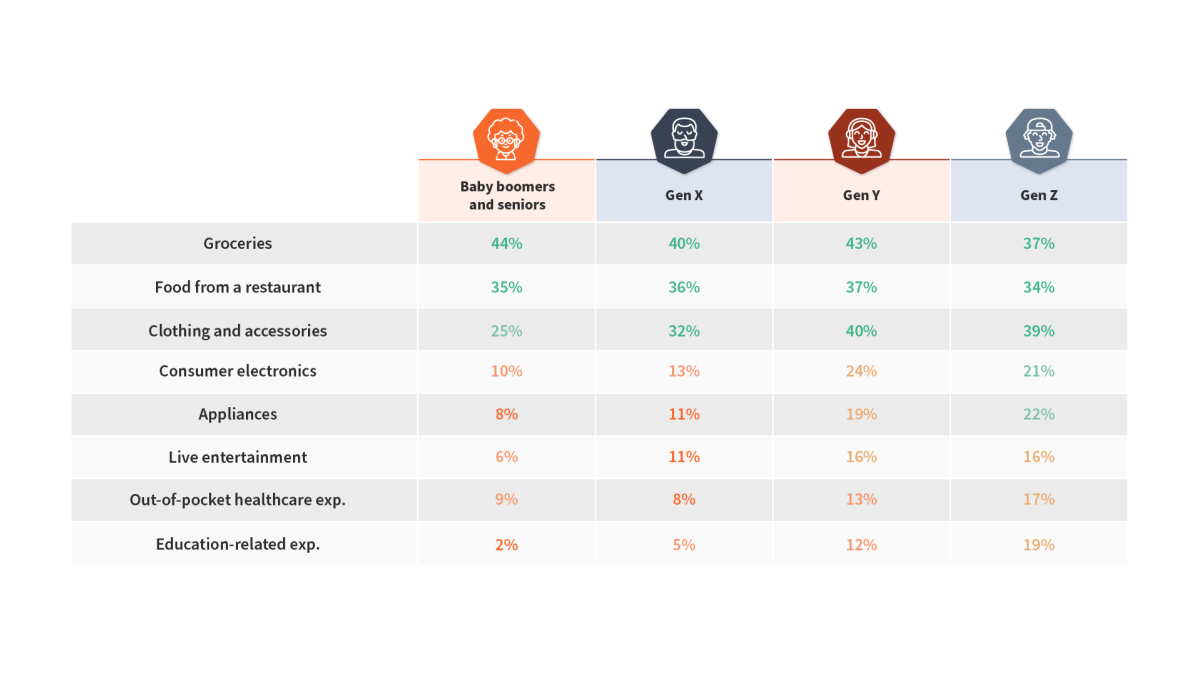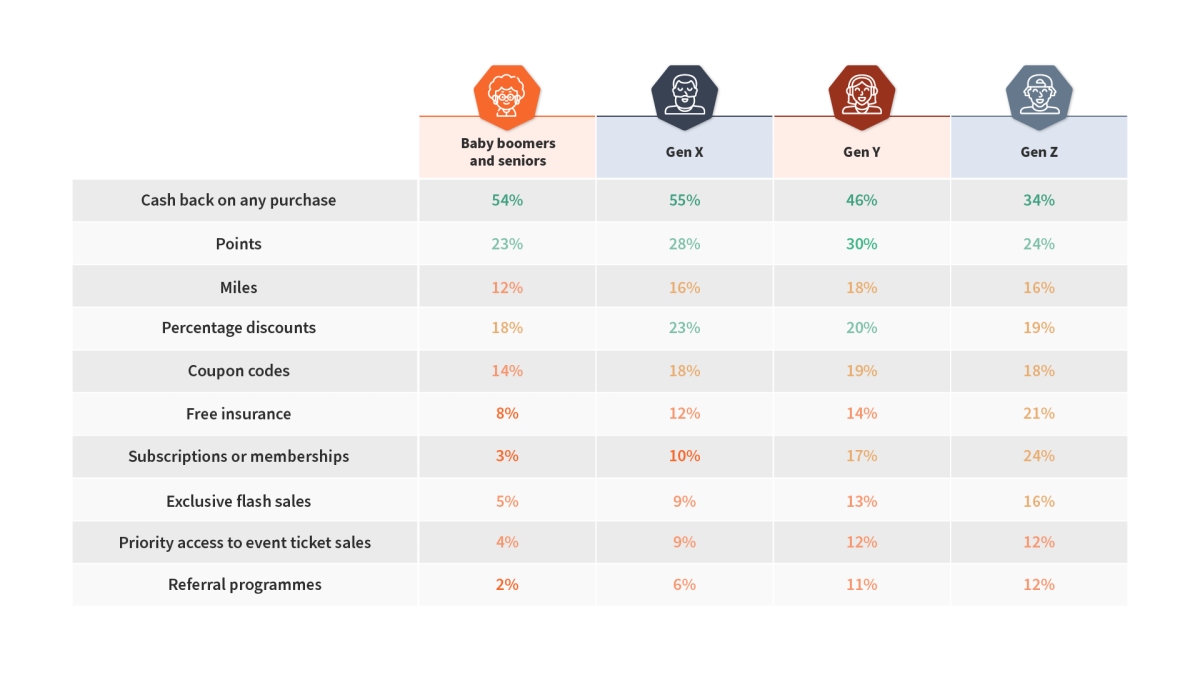Summary
- Loyalty programmes boost business, but many fail: Effective programmes drive growth through advocacy and increased customer value, but common errors hinder success.
- Customisation and customer understanding are key: Tailor rewards to preferences, offer flexible options, and avoid generic approaches.
- Robust technology is crucial for future success: Build scalable, data-driven systems to adapt and prevent fraud.
The importance of loyalty programmes
In today's competitive business landscape, customer loyalty is crucial for sustainable growth. Yet, despite the widespread adoption of loyalty programmes, many still fail to engage customers effectively.
On average, consumers participate in 12 loyalty programmes, but 54% become inactive soon after joining. The most common frustrations include:
- 66 % of consumers find rewards take too long to earn
- 45% feel rewards are not valuable enough
So, what sets successful loyalty programmes apart from those that fade into the background?
Why loyalty programmes matter
Loyalty programmes create measurable business impact by strengthening customer relationships and driving revenue growth. Brand with strong loyalty strategies enjoy:
- Increased brand advocacy: 79% of consumers are more likely to recommend brands with solid loyalty programmes1, and referral leads boast a 30% higher conversion rate than other marketing channels
- Higher customer lifetime value: Existing customers are 50% more likely to try new products and spend 31% more on average than new customers.2 Members who redeem rewards also spend three times more annually than non-redeemers.
- Accelerated business growth: Loyalty leaders grow 2.5 times as fast as their industry peers.3 Brands with top-tier customer satisfaction outperform competitors significantly.
With these benefits, it is no surprise that by 20274, one in three businesses without a loyalty programme today will launch one. However, merely launching a programme alone is not enough. To succeed, businesses must avoid common mistakes that hinder engagement and effectiveness.
Common loyalty programme mistakes to avoid
Even well-intentioned loyalty programmes can fall short if they overlook key customer expectations. Avoid these common pitfalls to ensure your programme drives engagement and long-term value:
- Separate rewards apps: Creating standalone apps for loyalty programmes often creates a disjointed user experience, making it inconvenient for customers to track and redeem rewards.
- Deeply hidden rewards: When rewards are difficult to find or understand, participation decreases dramatically, reducing overall engagement and redemption rates.
- Generic “lift and shift” vendor platforms: Implementing off-the-shelf solutions without customisation fails to reflect brand identity and often ignores unique customer preferences.
- Unclear redemption processes: Confusion around how to claim rewards diminishes perceived programme value and leads to customer frustration.
- Insufficient user testing: Failing to test with actual users leads to misaligned features that create friction in the customer journey and waste development resources.
- Ambiguous rules and expiration policies: Lack of clarity about how rewards work and when they expire generates distrust and leads to disengagement.
Key metrics you need to track
A successful loyalty programme does more than offer rewards – it drives meaningful business outcomes. To maximise impact, companies must track key metrics that align with strategic objectives while implementing reward structures that enhance engagement. These indicators help measure customer acquisition, retention, revenue growth, engagement, and overall satisfaction, ensuring the programme delivers long-term value.

By leveraging data-driven insights and diverse reward structures, businesses can create loyalty programmes that drive engagement, customer satisfaction, and long-term profitability. Successful loyalty programmes typically use one or more of these structures:

- Tiered programmes that offer increasingly valuable rewards as customers progress through levels
- Paid membership models that charge fees for enhanced benefits
- Partnership approaches that collaborate with other businesses to expand reward options
Understanding generational preferences
Reward preferences vary significantly across age groups, and even within the same customer segment, priorities can differ widely. A one-size-fits-all approach no longer works. Today's consumers expect rewards that align with their lifestyles and values.
For example:
- Gen Z: 30% prefer cash back, 20% value subscriptions and memberships, and another 20% prioritise free insurance.
- Millennials: Gravitate towards experiential rewards and recognition.
- Gen X: Value a mix of cash back and special privileges.
- Baby Boomers: More than 50% prefer cash back.
Even within generations, preferences are diverse. While the Gen Z values live entertainment and consumer electronics, a significant portion highly values healthcare and education-related rewards. Similarly, Baby Boomers who prefer grocery rewards may also seek perks in dining or fashion.
Below is a detailed view of each generation’s reward preferences and values:


The shift towards hyper-personalisation
To drive engagement and long-term loyalty, companies must move beyond one-size-fits-all approaches. They need to implement flexible reward structures that cater to the diverse needs of different customer segments. This means offering multiple reward options, leveraging data-driven insights to personalise experiences, and empowering customers with choice.
In today’s market, customers expect hyper-personalisation and the flexibility to choose the rewards that matter most to them. Loyalty is not only about offering rewards. It’s also about offering the right rewards, at the right time, to the right customers.
Best practices for a winning loyalty programme
A well-designed loyalty programme goes beyond simple rewards. It enhances customer engagement, strengthens brand loyalty, and provides tangible value. Here are key strategies that have proven effective:
1. Flexibility and adaptability
- Ultra-flexible redemption methods allow customers to easily convert rewards across various formats. In Brazil, a leading digital-first financial institution set a new industry benchmark for NPS among high-income customers by offering 1% cashback on all credit card purchases. Customers could seamlessly redeem rewards to their accounts or convert them to miles without leaving the mobile app. Additionally, unused cashback balances generated yield at 200% of CDI, further enhancing the programme's appeal.
- Paid loyalty programmes can work when they clearly demonstrate value. A British fintech company exemplifies this with its tiered subscription plans, which offer progressively valuable benefits, like insurance coverage, lifestyle perks, advanced financial tools, and preferential rates, making the upgrade costs feel justified.
2. Differentiation
- Deep and narrow specialisation can target specific customer segments with precision. For example, a European digital bank integrates sustainability into its loyalty programme by planting trees whenever customers use their cards. Meanwhile, a US-based fintech company rewards users with fractional shares, enabling them to build investment portfolios that align with their spending habits.
- Rewarding non-traditional behaviours sets programmes apart. One digital bank incentivises healthy habits, safe driving, and responsible spending, while others even reward students for good grades or offer perks for proactive credit monitoring.
- Strategic partnerships expand reward ecosystems and enhance programme value. For example, a major bank’s five-year collaboration with an entertainment giant aims to increase new customer acquisition fourfold through co-branded cards, financial literacy content, and exclusive merchandise.
3. Appeal to human nature
- Instant gratification keeps customers motivated and engaged. For example, one digital bank enables users to instantly redeem free treats at partner retailers by simply showing a QR code on their app — no transactions or waiting periods.
- Gamified experiences tap into customers' competitive and playful instincts. Some digital banks offer reward badges for completing financial challenges, which can be used to earn new outfits for in-app mascot. Others introduce interactive games that allow users to earn prizes, boosting engagement and participation.
Case study: Singapore's first digital bank, has become one of the world's fastest-growing digital institutions by attracting 500,000 customers (over 10% of Singapore's adult population) within the first 200 days of launch. Their success stems from ecosystem integration, viral referral programme, customer-centric rewards, engaging gamification, and fraud prevention.
Building a future-proof loyalty architecture
Successful loyalty programmes share key architectural traits:
- Modular and adaptable: Minimising system interdependencies for seamless customisation.
- Scalable: Handling increased data volumes and simplified partner onboarding.
- Real-time capable: Enabling instant reward issuance and communication.
- Data integrity: Ensuring compliant, conflict-free data management.
- Data-driven: Supporting testing and economic recalibration.
- Fraud-resistant: Maintaining comprehensive audit trails and integrity checks.
The path forward
Loyalty programmes must evolve from transactional rewards to hyper-personalised experiences. Customers expect rewards that align with their values and spending habits. Businesses leveraging AI-driven insights and omnichannel engagement will build deeper loyalty and drive sustained growth.
Financial institutions can maximise transaction data to offer real-time, tailored incentives that boost engagement. Loyalty today is about creating brand advocates, not just retaining customers. With the right strategies and technology, businesses can turn loyalty programmes into powerful revenue drivers.
-
The Bond Loyalty Report (Bond, 25 July 2024).
-
The Value Of Investing In Loyal Customers (Forbes, 29 January 2020).
-
Are You Undervaluing Your Customers? (Harvard Business Review, January 2020).
-
What Will Marketing Focus on in 2023? (Gartner, 23 January 2023).


